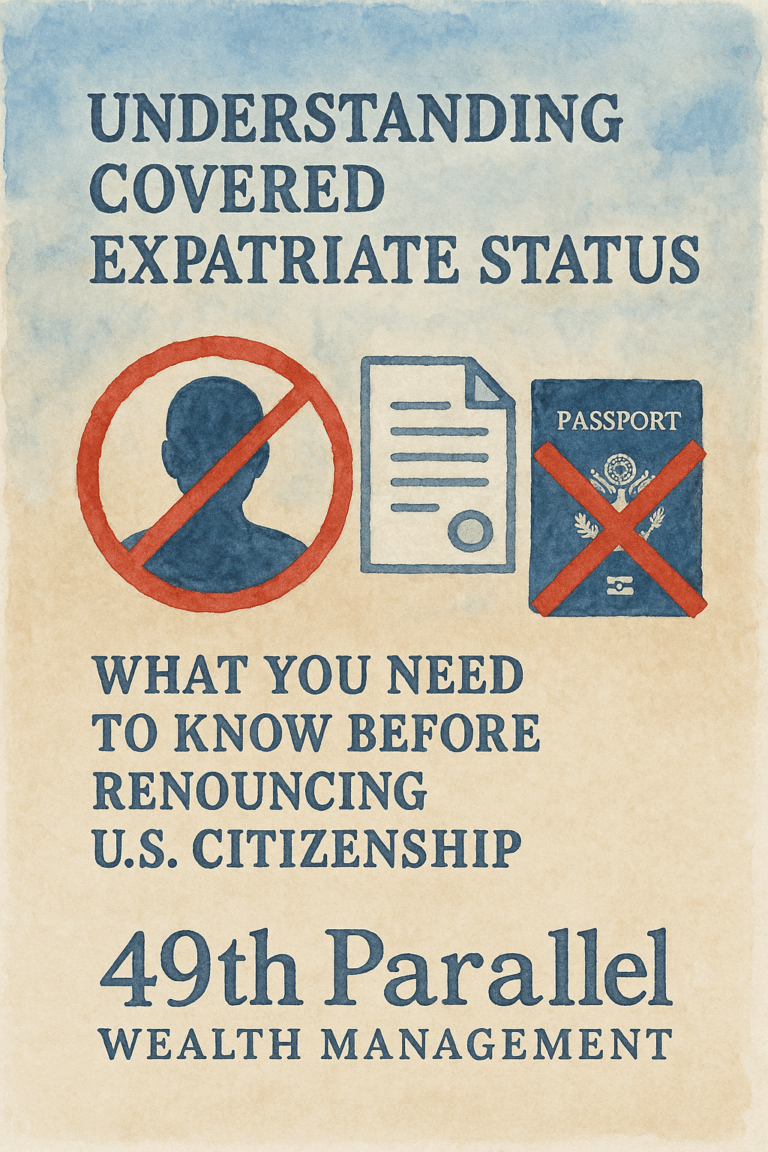As cross-border work arrangements become more common, many Canadian residents find themselves employed by U.S. companies—often working remotely or commuting across the border. A key financial question emerges:
Can you deduct your U.S. 401(k) contributions on your Canadian tax return?
The answer: Yes, in some cases—but only if you meet specific conditions and complete the right CRA forms.
Let’s break it all down.
What Is a 401(k) and Why It Matters for Canadians
A 401(k) is a tax-deferred retirement savings plan offered by U.S. employers. If you’re working for a U.S.-based company and contributing to its group 401(k) plan, you’re likely enjoying U.S. tax deferral and possibly an employer match.
But if you’re living in Canada, you also have to consider how the Canada Revenue Agency (CRA) treats those contributions—and that’s where things get nuanced.
Deducting 401(k) Contributions in Canada: When It’s Allowed
Canada does not automatically recognize 401(k) contributions as tax-deferred, but under the Canada-U.S. Tax Treaty, the CRA does allow certain 401(k) contributions to be deductible on your Canadian tax return—but only under two specific scenarios:
- Working Remotely From Canada for a U.S. Employer
Use CRA Form RC267
If you live in Canada and work remotely for a U.S. employer while contributing to that employer’s group 401(k) plan, you can claim a deduction on your Canadian return using Form RC267.
- Commuting to the U.S. to Work for a U.S. Employer
Use CRA Form RC268
If you physically commute from your home in Canada to a U.S. job and contribute to your U.S. employer’s 401(k), you can use Form RC268 to deduct those contributions on your Canadian return.
Key Limitation: You’re Still Bound by Your RRSP Contribution Room
Even if you’re eligible to deduct your 401(k) contributions in Canada, the deduction is limited to your available RRSP contribution room.
Example:
- You have CAD $25,000 in RRSP contribution room.
- The average USD/CAD exchange rate for the year is 1.35.
- Your deductible 401(k) contributions will be limited to:
$25,000 CAD ÷ 1.35 = $18,518 USD (approximately)
This means that even if you contribute $23,000 USD to your 401(k), you can only deduct $18,518 USD on your Canadian tax return, based on RRSP limits.
Any contributions above that limit may still qualify for U.S. tax deferral, but they won’t be deductible in Canada—and investment growth on that portion may be subject to Canadian taxation.
No RRSP Room = No Deduction (Even If Eligible)
A major pitfall occurs when a person moves to Canada and continues working for their U.S. employer. In their first year as a Canadian tax resident, they won’t have any RRSP room—because RRSP room is based on the prior year’s Canadian earned income.
So even if they continue contributing to their U.S. 401(k), those contributions will not be deductible in Canada during their first year of residence.
Other Considerations
Foreign Reporting Obligations
Qualified retirement accounts in the U.S. are exempt from T1135 foreign account reporting.
Currency Risk
401(k) accounts are denominated in USD. This exposes you to exchange rate risk when your retirement spending will be in CAD.
Withdrawals and Double Taxation
Withdrawals from a 401(k) are taxable in both countries. The Canada-U.S. Tax Treaty and foreign tax credits can be used to eliminate double taxation. 401(k) income is U.S source, so the U.S. has first taxing rights on it. The foreign tax credits created from paying tax in the U.S. may not be enough to eliminate all of the tax payable in Canada since Canada is a higher tax jurisdiction.
Steps to Do It Right
- Track Your RRSP Room
Monitor your CRA My Account or Notice of Assessment. - Use the Right CRA Form
- Work With a Cross-Border Specialist
Coordinate your U.S. and Canadian filings to avoid double taxation, reporting issues, and missed deductions. - Plan Ahead if You’re Moving to Canada
Understand that you won’t be able to deduct 401(k) contributions in your first Canadian tax year and adjust your planning accordingly.
Building a Retirement Bridge Across the 49th Parallel
Working for a U.S. employer while living in Canada can be a powerful opportunity—but only if you navigate the tax systems carefully. With the right forms, coordinated strategies, and awareness of your RRSP limits, you can legally deduct your 401(k) contributions in Canada and keep your cross-border retirement plan on track.
It is important to note that only contributions to employer sponsored qualified retirement plans are deductible in Canada, which means that contributions to individual IRAs are not deductible.
If you are considered a covered expatriate, you are required to file IRS Form 8854. Pay special attention to Part ll, Section D because your elections on this section will affect your taxation on your year of exit and the withholding tax rates you are eligible for in the future. Rolling your 401(k) to a Rollover IRA before your departure date can help avoid 401(k) taxation issues, but that may not be possible if you are not severing service from the employer that is sponsoring your 401(k).
Need Help?
At 49th Parallel Wealth Management, we are your cross-border retirement experts!
Book a free consultation today to make sure your 401(k), RRSP, and broader wealth plan are optimized for both sides of the border.
Suggested Hashtags
#401kCanada #CrossBorderFinance #RC267 #RC268 #RRSPLimits #USCanadaTaxTreaty #RemoteWorkUSA #49thParallelWealth



